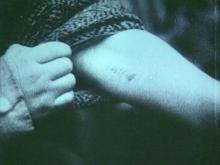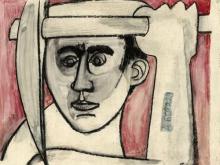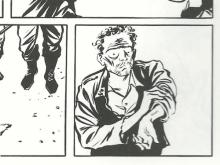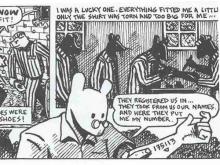Kinodokumenty
KINODOKUMENTY O ZVERSTVACH NEMECKO-FAŠISTSKICH ZACHVATČIKOV, SU/Germany 1946
This film was produced by the Soviet prosecution for a screening during the Nuremberg Trials in 1945/46. It included footage that was filmed by Soviet camera teams at a variety of atrocity sites, which were discovered after liberating territories formerly occupied by German military forces. Among those atrocity sites were also the concentration camp Majdanek near Lublin and Auschwitz-Birkenau, where Soviet camera operators also filmed the children presenting their Number Tattoos to the camera. This direct use of the three shots is already a citation of the earlier Soviet documentary OSWIECIM/AUSCHWITZ (1945) and can therefore be considered the beginning of the migration process of the iconic sequence. Preceding is the footage of children walking in-between barbed wire fences. In most cases filmmakers will use exactly this succession of shots in later films.
KINODOKUMENTY also marks the beginning of the symbolising use of the footage for illustrating the loss of names and identity in the humiliation process at the camps. However, the voice-over related to this sequence is much more sober and informative than, for instance, in the American film DEATH MILLS. Interestingly, the shots are directly linked to the process of extermination by adding the iconic shot of Zyklon B cans and vials with poison that was used to kill prisoners. In doing so, the footage of the children is linked closer to mass murder than to the topic of survival, which became more dominant in the later direct and especially indirect use of the shots.





